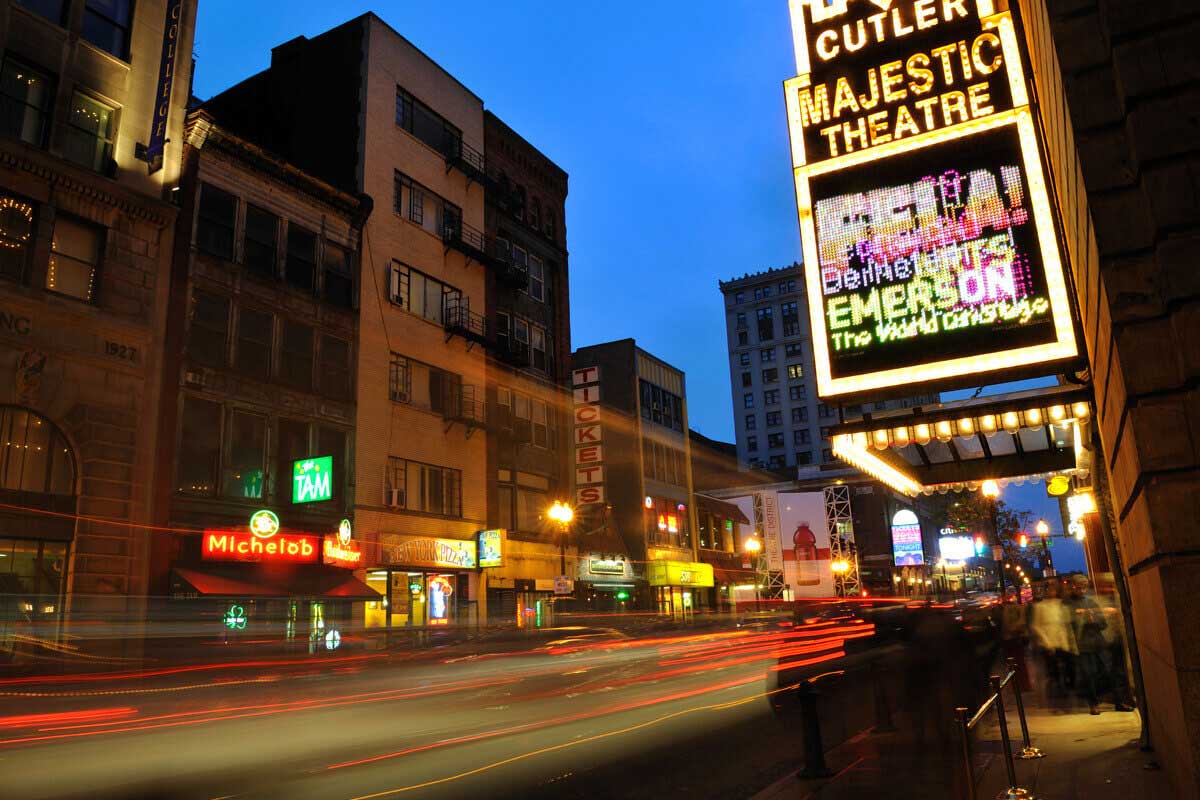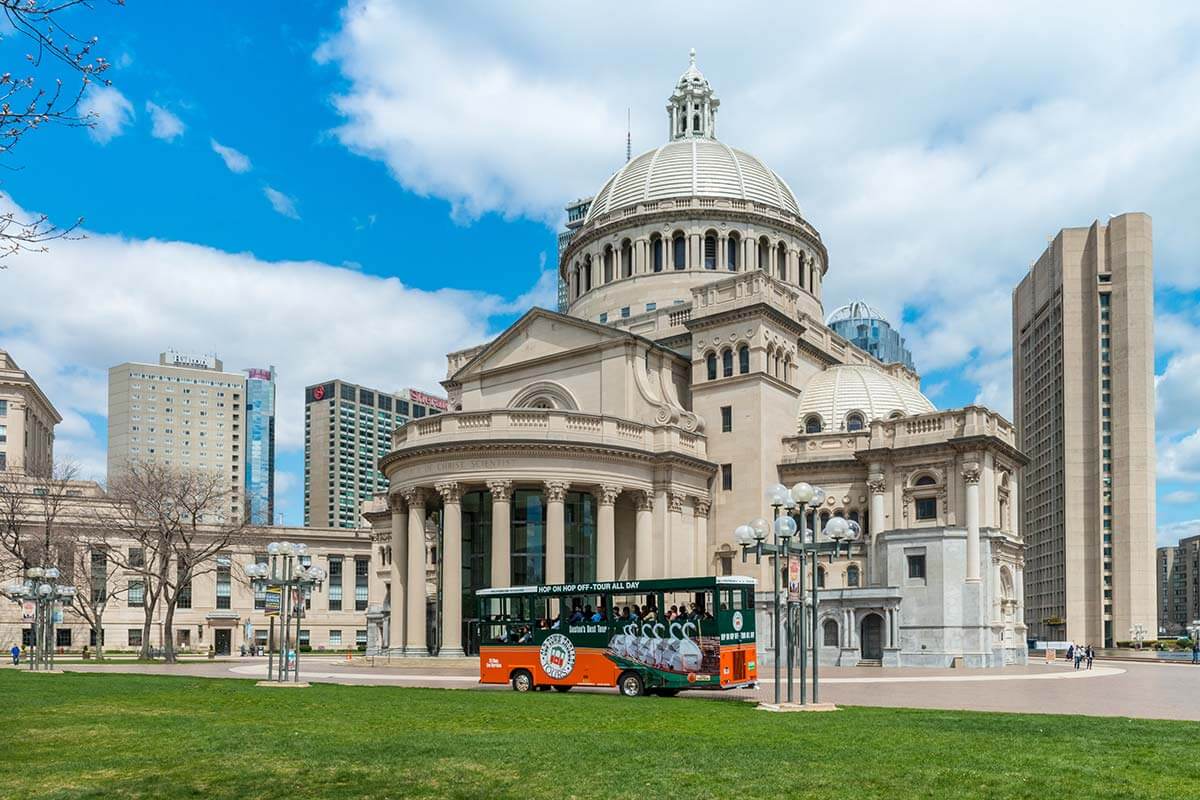Faneuil Hall
200 Atlantic Ave, Boston, MA 02110, USA
Transfer point to Blue Loop - Seaport Hotel Shuttle.
Tickets Sold at this Stop
Atlantic Avenue at corner of State Street
Stop #1 is our primary staging and ticketing area, located at 200 Atlantic Avenue, directly on the end of the Marriott Long Wharf Hotel. Stop # 1 is also directly across the street from Faneuil Hall Marketplace, and immediately next door to Christopher Columbus Park.
Historic North End
Commercial St opp Hull St, Boston, MA 02109, USA
Commercial Street & Hull Street
Stop #2 is at 561 Commercial Street, in front of the Steriti Ice Rink. Stand at the bus stop located at the corner of Commercial Street and Hull Street. It is located about two blocks east from the Charlestown Bridge.
USS Constitution and Museum
1 2nd Ave, Charlestown, MA 02129, USA
Stop #3 is located directly in front of Gate 1 at the Charlestown Navy Yard. The driveway and Gate #1 are just off of Constitution Road, one block down from the cross street of Chelsea Street.
North Station / TD Garden
Causeway St @ North Station, Boston, MA 02114, USA
Stop #4 is along the curb space at Portal Park with the Leonard P. Zakim Bridge in the background. Directly across the street from our stop is a Courtyard Marriott. There is a “Sightseeing Loading Zone” sign at the curb space for our stop.
Downtown Crossing / Historic District
State Street at Congress Street, Boston, MA 02203, USA
State Street between Washington and Congress Streets.
Tickets Sold at this Stop
Stop #5 is on State Street, directly across from the Old State House Museum. The trolley picks up at the glass bus shelter that's on the brick plaza across the street from the Old State House.
Cheers Bar
85 Beacon St, Boston, MA 02108, USA
Transfer point to Orange Loop - Back Bay Loop.
Tickets Sold at this Stop
The trolley picks up directly in front of Cheers, near the corner of Brimmer.
Old Town Trolley Welcome Center
2 1/2 Park Plaza, Boston, MA 02116, USA
Transfer point to Orange Loop - Back Bay Loop.
Tickets Sold at this Stop
Stop #7 is directly next to the Edgar Allan Poe statue, outside of our Welcome Center. There is a “Sightseeing Loading Zone” sign at the curb space for our Stop.
Beacon Hill / Boston Common
Beacon St @ Park St, Boston, MA 02108, USA
Stop #8 is to the right of the Robert Gould Shaw & 54th Regiment memorial at the “Sightseeing Loading Zone” signed area.
Boston Tea Party Ships & Museum
313 Congress St, Boston, MA 02210, USA
Transfer point to Blue Loop - Seaport Hotel Shuttle.
Stop #9 is at the city bus stop outside of large arch entrance to 313 Congress. There is a “Sightseeing Loading Zone” sign at the curb space for our stop.
Prudential Center/View Boston Observation Deck
40 Dalton St, Boston, MA 02115, USA
Stop #10 is directly in front of the Hilton Hotel entrance, near the corner of Dalton St. and Scotia St. This is the closest stop to Fenway Park. There is a “Sightseeing Loading Zone” sign at the curb space for our stop.
Christian Science Plaza / Symphony Hall
140 Huntington Ave, Boston, MA 02115, USA
Stop #11 is directly in front of the Colonnade Hotel at the restaurant, “Lucie.” There is a “Sightseeing Loading Zone” sign at the curb space for our stop.
Copley Place Mall
100 Huntington Ave, Boston, MA 02116, USA
Tickets Sold at this Stop
Stop #12 is directly outside of the revolving door entrance to Copley Place, below the elevated glass foot bridge.
Copley Square / Trinity Church
Boylston St & Clarendon St, Boston, MA 02116, USA
Directly across the street from #545 Boylston Street.
Stop #13 is on Boylston Street on the north side of Trinity at the bus shelter near the Phillips Brooks Statue.
Boston Convention Center
413-415 Summer St, Boston, MA 02127, USA
Stop #14 is at the city bus shelter at the base of the driveway to the Westin Waterfront Hotel.
Massport/Black Falcon Cruise Ship Terminal
666R Summer St, Boston, MA 02210, USA
Located at the north-east corner of the cruise port parking lot.
Exit the cruise terminal, turn left and go to the end of the parking lot. During Cruise Ship ports of call, there will be a white tent and sales kiosk on the corner, other days, there is an “Old Town Trolley Stop” sign.
Boston Fish Pier
Northern Ave @ D St, Boston, MA 02210, USA
Stop #16 is located directly in front of the giant yellow storage container that reads “BOXES.” An “Old Town Trolley Stop” sign is attached to the traffic signal pole at the curb space for our stop.
South Station
Summer St @ South Station - Red Line entrance, Boston, MA 02110, USA
Stop #17 is a short walk east on Summer St. to the “Sightseeing Loading Zone” sign.
Faneuil Hall
200 Atlantic Ave, Boston, MA 02110, USATransfer point to Blue Loop - Seaport Hotel Shuttle.
Tickets Sold at this Stop
Atlantic Avenue at corner of State Street
Stop #1 is our primary staging and ticketing area, located at 200 Atlantic Avenue, directly on the end of the Marriott Long Wharf Hotel. Stop # 1 is also directly across the street from Faneuil Hall Marketplace, and immediately next door to Christopher Columbus Park.
Historic North End
Commercial St opp Hull St, Boston, MA 02109, USACommercial Street & Hull Street
Stop #2 is at 561 Commercial Street, in front of the Steriti Ice Rink. Stand at the bus stop located at the corner of Commercial Street and Hull Street. It is located about two blocks east from the Charlestown Bridge.
USS Constitution and Museum
1 2nd Ave, Charlestown, MA 02129, USAStop #3 is located directly in front of Gate 1 at the Charlestown Navy Yard. The driveway and Gate #1 are just off of Constitution Road, one block down from the cross street of Chelsea Street.
North Station / TD Garden
Causeway St @ North Station, Boston, MA 02114, USAStop #4 is along the curb space at Portal Park with the Leonard P. Zakim Bridge in the background. Directly across the street from our stop is a Courtyard Marriott. There is a “Sightseeing Loading Zone” sign at the curb space for our stop.
Downtown Crossing / Historic District
State Street at Congress Street, Boston, MA 02203, USAState Street between Washington and Congress Streets.
Tickets Sold at this Stop
Stop #5 is on State Street, directly across from the Old State House Museum. The trolley picks up at the glass bus shelter that's on the brick plaza across the street from the Old State House.
Cheers Bar
85 Beacon St, Boston, MA 02108, USATransfer point to Orange Loop - Back Bay Loop.
Tickets Sold at this Stop
The trolley picks up directly in front of Cheers, near the corner of Brimmer.
Old Town Trolley Welcome Center
2 1/2 Park Plaza, Boston, MA 02116, USATransfer point to Orange Loop - Back Bay Loop.
Tickets Sold at this Stop
Stop #7 is directly next to the Edgar Allan Poe statue, outside of our Welcome Center. There is a “Sightseeing Loading Zone” sign at the curb space for our Stop.
Beacon Hill / Boston Common
Beacon St @ Park St, Boston, MA 02108, USAStop #8 is to the right of the Robert Gould Shaw & 54th Regiment memorial at the “Sightseeing Loading Zone” signed area.
Boston Tea Party Ships & Museum
313 Congress St, Boston, MA 02210, USATransfer point to Blue Loop - Seaport Hotel Shuttle.
Stop #9 is at the city bus stop outside of large arch entrance to 313 Congress. There is a “Sightseeing Loading Zone” sign at the curb space for our stop.
Prudential Center/View Boston Observation Deck
40 Dalton St, Boston, MA 02115, USAStop #10 is directly in front of the Hilton Hotel entrance, near the corner of Dalton St. and Scotia St. This is the closest stop to Fenway Park. There is a “Sightseeing Loading Zone” sign at the curb space for our stop.
Christian Science Plaza / Symphony Hall
140 Huntington Ave, Boston, MA 02115, USAStop #11 is directly in front of the Colonnade Hotel at the restaurant, “Lucie.” There is a “Sightseeing Loading Zone” sign at the curb space for our stop.
Copley Place Mall
100 Huntington Ave, Boston, MA 02116, USATickets Sold at this Stop
Stop #12 is directly outside of the revolving door entrance to Copley Place, below the elevated glass foot bridge.
Copley Square / Trinity Church
Boylston St & Clarendon St, Boston, MA 02116, USADirectly across the street from #545 Boylston Street.
Stop #13 is on Boylston Street on the north side of Trinity at the bus shelter near the Phillips Brooks Statue.
Boston Convention Center
413-415 Summer St, Boston, MA 02127, USAStop #14 is at the city bus shelter at the base of the driveway to the Westin Waterfront Hotel.
Massport/Black Falcon Cruise Ship Terminal
666R Summer St, Boston, MA 02210, USALocated at the north-east corner of the cruise port parking lot.
Exit the cruise terminal, turn left and go to the end of the parking lot. During Cruise Ship ports of call, there will be a white tent and sales kiosk on the corner, other days, there is an “Old Town Trolley Stop” sign.
Boston Fish Pier
Northern Ave @ D St, Boston, MA 02210, USAStop #16 is located directly in front of the giant yellow storage container that reads “BOXES.” An “Old Town Trolley Stop” sign is attached to the traffic signal pole at the curb space for our stop.
South Station
Summer St @ South Station - Red Line entrance, Boston, MA 02110, USAStop #17 is a short walk east on Summer St. to the “Sightseeing Loading Zone” sign.
- City Tour Loop

- Back Bay Loop

- Seaport Hotel Shuttle Loop

- Freedom Trail Walking Tour

- Tour Stops

- Parking

Faneuil Hall
Green Loop – City Tour (Transfer point to Blue Loop - Seaport Hotel Shuttle)
Attractions to explore near this stop
Share with your friends!
Attractions to explore near this stop
Explore Quincy Market

Located in the heart of Boston’s historic downtown, Quincy Market is a must-visit destination for anyone exploring the city. From its striking Greek Revival architecture to its lively marketplace atmosphere, Quincy Market in Boston provides an experience that combines shopping, dining and a glimpse into the city’s storied past. Whether you’re a local rediscovering a cherished destination or a visitor following the Freedom Trail, Quincy Market offers something for everyone to enjoy.
Boston Harbor Cruises
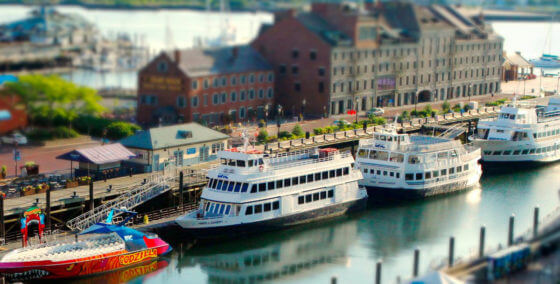
Boston Harbor Cruises has been introducing visitors to the Boston Harbor since 1926. Today they are New England’s oldest and largest cruise company. Boston Harbor Cruises offers Whale Watching, Sightseeing, Lighthouse, and Sunset Cruises, in addition to fast ferries for private functions and general entertainment. Boston Harbor Cruises also runs The Landing, Boston’s only fully outdoor patio bar and a great spot to enjoy drinks and the view of the Boston harbor. There’s no reason to trek to Boston’s Historic Ballpark when you can catch a Red Sox game on TV from the waterfront!
-
Admissions
New England Aquarium

The New England Aquarium, situated on the scenic Central Wharf, has more than a dozen exhibits that highlight hundreds of different species from around the world. Attracting 1.3 million visitors each year, the Boston Waterfront attraction recreates natural habitats ranging from reefs and tide pools to rocky shorelines. In addition to its exhibits, the aquarium offers Whale Watch excursions that take visitors 30 miles east of Boston to Stellwagen Bank where you can see whales, dolphins, sea birds and other marine life. The aquarium also has an IMAX® Theater that features films of animals and their habitats, 3-D movies and first-run feature
-
Admissions
-
Shopping
-
Dining
-
Restrooms
 Faneuil Hall
Faneuil Hall
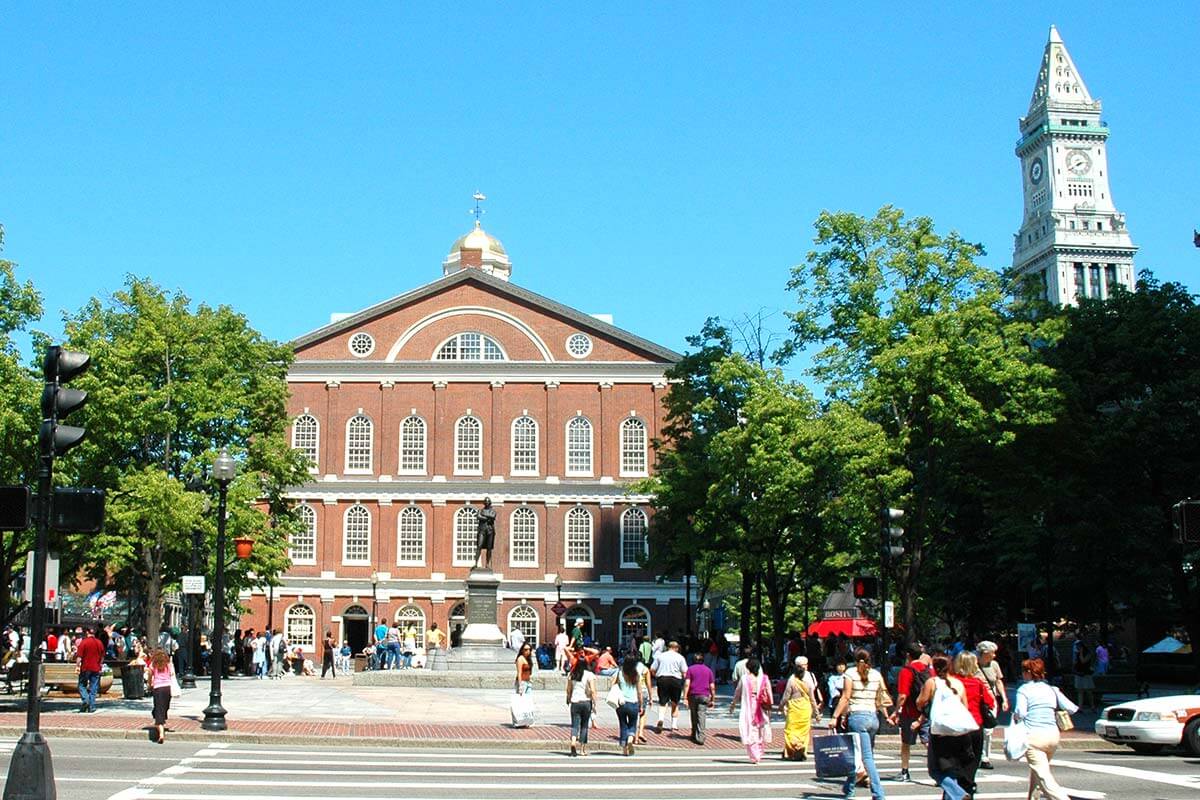
One of Boston’s most well known historic sites, Faneuil Hall Marketplace was constructed in 1742 and served as a marketplace and meeting hall since it first opened its doors. Named after the wealthy merchant who provided funding for the hall, Peter Faneuil, this significant structure has been the site of many important and inspirational speeches by famed Americans, including Samuel Adams. When visiting Boston, a stop here is definitely a must do.
-
 Admissions
Admissions -
 Shopping
Shopping -
 Dining
Dining -
 Entertainment
Entertainment -
 Restrooms
Restrooms
Historic North End
Green Loop – City Tour
Attractions to explore near this stop
Share with your friends!
Attractions to explore near this stop
Paul Revere House: A Complete Visitor Guide

Built in 1680, the unimposing wooden house at 19 North Square is the oldest house in downtown Boston. The 3-story building was the home of silversmith and Boston Patriot Paul Revere from 1770-1800, previously housing the parsonage of the Second Church of Boston. Revere sold the house in 1800 and it became a tenement with the ground floor used for shops and various businesses over the years. In 1902, Revere’s great-grandson purchased the property and restored it so that it could be opened to the public. In 1908, after restoration by architects and preservationists, the Paul Revere House opened to the public as one of the earliest historic house museums in Boston and the U.S.
-
Admissions
Old North Church
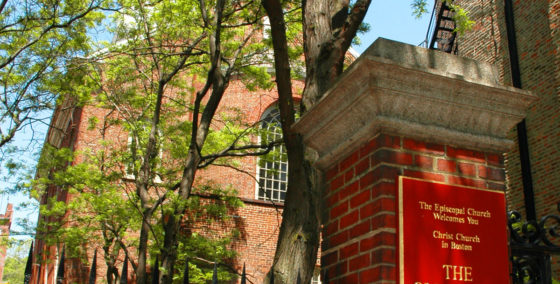
Officially called Christ Church, the Old North Church is the oldest church building in Boston, a National Historic Landmark, and a stop on the Freedom Trail. Built in 1723, the Old North Church was inspired by the works of Christopher Wren, a British architect. It is most commonly known as the first stop on Paul Revere’s “Midnight Ride,” where he instructed three Boston Patriots to hang two lanterns in the church’s steeple. The lanterns were used to inform Charlestown Patriots that the British were approaching by sea and not by land.
-
Shopping
-
Restrooms
Copp's Hill Burying Ground

The gravestones in Copp’s Hill Burying Ground, Boston’s second oldest burying ground, tell the story of the population of the North End in colonial times. Originally known as Windmill Hill, the hill took the name of William Copp, a shoemaker who donated the land for a burying ground in 1659. It is the place of rest for thousands of artisans, craftspeople, and merchants. Some of the well known individuals are Increase and Cotton Mather, of the family of ministers, Robert Newman, sexton of the Old North Church at the time of Paul Revere’s ride, Edmund Hart, shipyard owner and builder of the USS Constitution, and Shem Drowne, the artist who made the weathervane for Faneuil Hall, among others.
 Historic North End
Historic North End
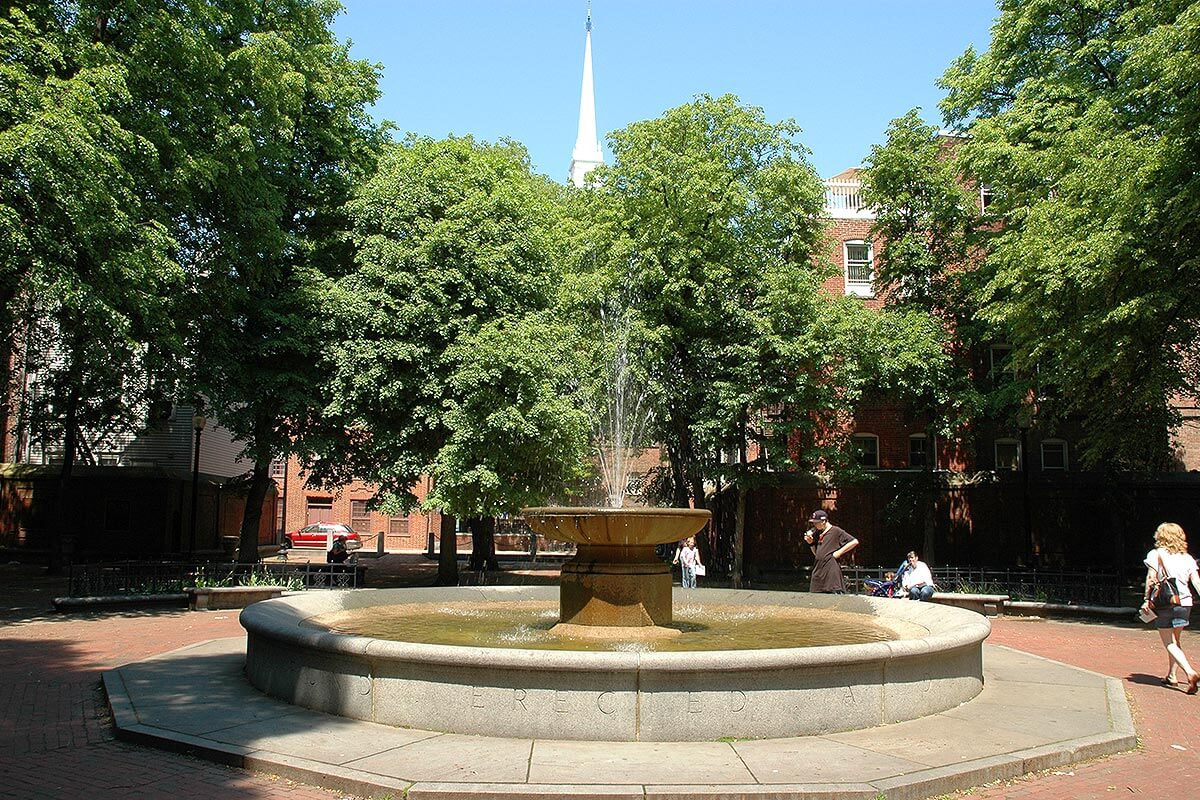
Welcome to Boston’s Little Italy. The North End is famous for the many authentic Italian restaurants, cafés, espresso bars, and sandwich shops that dot the neighborhood. The area features nearly 100 restaurants, ranging from the authentic Italian and Italian-American family style to Chinese, Thai, and local seafood. After dinner, stop by one of the world famous pastry shops. Mike’s Pastry and Modern Pastry each have their own unique twist on classic desserts. Get there early to avoid the lines!
USS Constitution and Museum
Green Loop – City Tour
Attractions to explore near this stop
Share with your friends!
Attractions to explore near this stop
USS Cassin Young
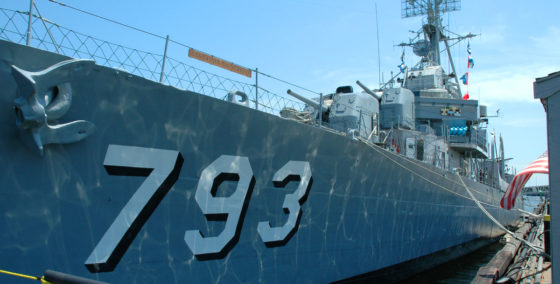
Named for Captain Cassin Young who was awarded the Medal of Honor for heroism during the attack on Pearl Harbor, the USS Cassin Young (DD – 793) is docked adjacent to Old Ironsides. Built in 1943, she was. The ship served during World War II and the Korean War. The destroyer saw action off Tinian, the island the Enola Gay took off from to drop the first atomic bomb, as well as Okinawa and Iwo Jima. One of only four Fletcher-class destroyers still afloat, she was designated a National Historic Landmark in 1986.
-
Admissions
-
Restrooms
Bunker Hill Monument

The Bunker Hill Monument was the first public obelisk in the United States designed to commemorate the Battle of Bunker Hill. The battle was actually misnamed because the majority of the action took place on Breed’s Hill and that is where the monument sits. The monument was begun in 1827 but construction had to be halted and it wasn’t completed until 1843. The architect, Solomon Willard, had the granite for the 221 ft structure brought in from Quincy, Massachusetts.
 USS Constitution and Museum
USS Constitution and Museum
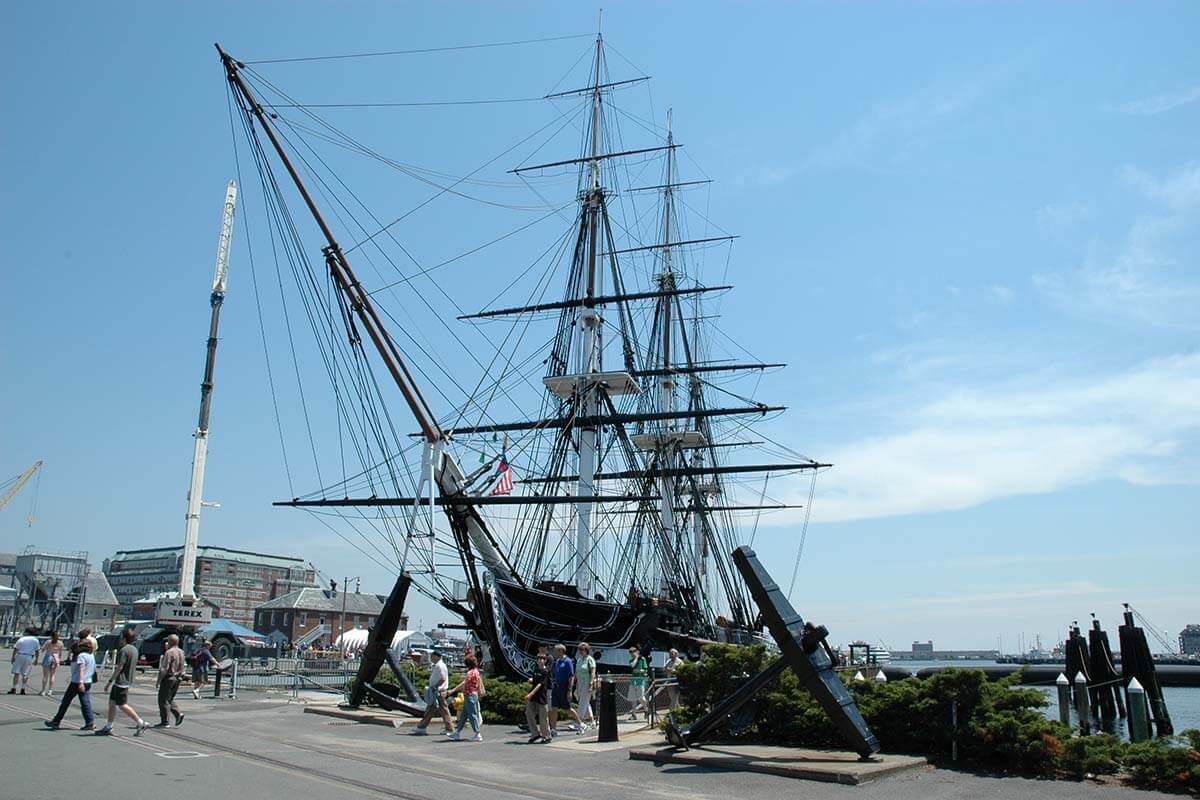
Launched in 1797, the USS Constitution is the oldest commissioned warship still afloat. Crisscrossing the globe, this three-masted frigate participated in the Barbary War off the coast of North Africa and sailed the Caribbean in search of pirates. She earned her nom de guerre Old Ironsides during the War of 1812 when enemy cannonballs bounced off her resilient wooden hull. Docked in the Charlestown Navy Yard, the famous ship is a floating museum open to public. It is also a stop on the on the Freedom Trail and the Old Town Trolley.
-
 Admissions
Admissions -
 Shopping
Shopping -
 Entertainment
Entertainment
North Station / TD Garden
Green Loop – City Tour
Attractions to explore near this stop
Share with your friends!
Attractions to explore near this stop
Museum of Science (MOS)

Boston’s Museum of Science, located on the Charles River Basin, has over 500 interactive exhibits and a variety of live presentations throughout the day. The museum also features a planetarium, New England’s only domed IMAX, a theater of electricity with one of the world’s largest Van de Graaff generators, and exhibits from the original Computer History Museum. Beginning with a collection of men sharing scientific interests in the early 1830’s, the museum still houses some of the artifacts that were originally stored and displayed.
-
Admissions
-
Restrooms
TD Garden

TD Garden is the home arena for the Boston Bruins of the National Hockey League and Boston Celtics of the National Basketball Association. TD Garden is owned by Delaware North, whose CEO, Jeremy Jacobs, also owns the Bruins. It is the site of the annual Beanpot college hockey tournament, and hosts the annual Hockey East Championships.
-
Admissions
-
Entertainment
-
Restrooms
The West End Museum
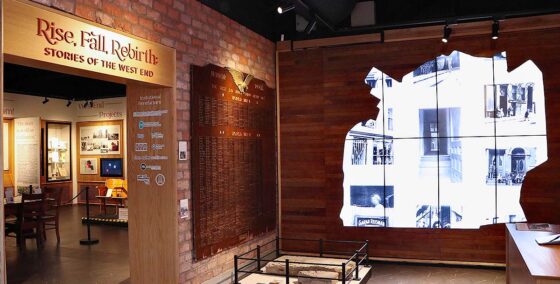
Step into the history of Boston’s Lost Neighborhood. The West End Museum (WEM) brings to life 400 years of history and urban change, focusing on the rise, fall, and enduring legacy of the historic West End.
Once a vibrant, diverse community, the old West End — along with the famed Scollay Square — was taken by the city via eminent domain and demolished between 1958 and 1962, displacing 14,000 residents. WEM preserves the stories of this lost neighborhood, examining both its destruction and how its identity has been reclaimed.
-
Admissions
-
Shopping
-
Restrooms
The Sports Museum
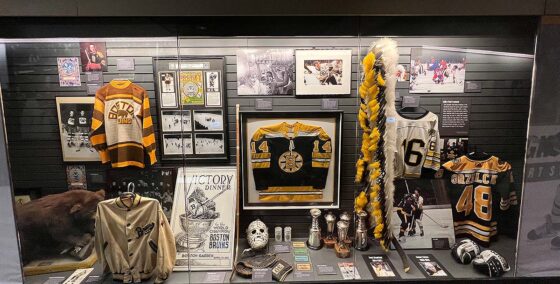
The Sports Museum is located on the 5th and 6th floors of the TD Garden. This Boston attraction features exhibits organized by sport, including hockey (Boston Bruins, Hartford Whalers, and Olympics), basketball (Boston Celtics), football (New England Patriots), and baseball (Boston Red Sox). Concourse galleries also feature boxing, rugby, soccer and artifacts from the Boston Marathon. The museum has life-size statues of Carl Yastrzemski, Bobby Orr, Larry Bird, and Harry Agganis, an old Boston Garden hockey penalty box, and thousands of other items.
-
Admissions
-
Restrooms
Harrison Gray Otis House

Built in 1796 by Charles Bulfinch for Harrison Gray Otis and his wife Sally, the house is the last surviving home in what was once Boston’s most exclusive neighborhood. As a developer of Beacon Hill, Otis made a fortune, and he later served as a Representative in Congress and Mayor of Boston. The Federal Style is emulated in the home’s classic architecture and elegant furnishings.
141 Cambridge Street, Boston
Downtown Crossing / Historic District
Green Loop – City Tour
Attractions to explore near this stop
Share with your friends!
Attractions to explore near this stop
Boston Massacre Site
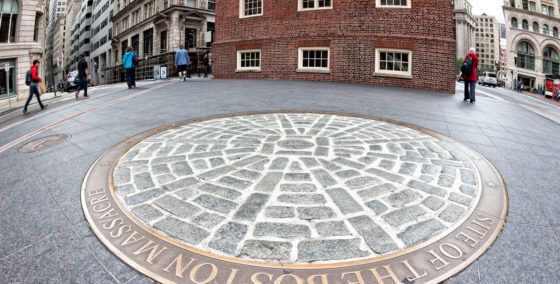
On March 5, 1770, the tension from the British military occupation of Boston escalated into the event now referred to as the Boston Massacre. There was heavy military presence in downtown Boston in order to maintain control over civilians and to enforce the Townshend Act. Various brawls between soldiers and civilians had taken place; but the evening of March 5th was the first to result in civilian deaths. Today the site of the massacre is marked by a cobblestone ring on the traffic island at the intersection of Devonshire and State Streets.
-
Entertainment
Old South Meeting House
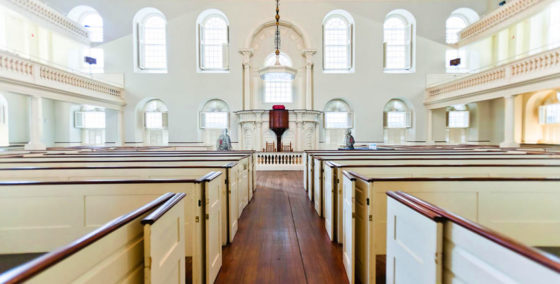
The Old South Meeting House was the largest building in colonial Boston and stands today as a symbol of the right to free speech and free assembly. The most well known meeting that took place here was held by the Sons of Liberty on December 16, 1773. The discussion in protest of the British tax on tea led directly to the Boston Tea Party, which took place later that very evening. 5,000 colonists gathered in the Old South Meeting House that day, an example of one of the larger crowds that could not have been accommodated by Faneuil Hall.
-
Admissions
-
Restrooms
Old State House

The Old State House, built in 1713 on the site of the first Town House, is the oldest surviving public building in Boston. The building served as a meeting place for the exchange of economic and local news and was said to be the center of politics in the colonies. The Declaration of Independence was read from the balcony on the east side of the building, and just below it is the spot where the Boston Massacre took place. The Old State House is one of the most important public buildings in the U.S.
-
Admissions
-
Restrooms
Old Corner Bookstore
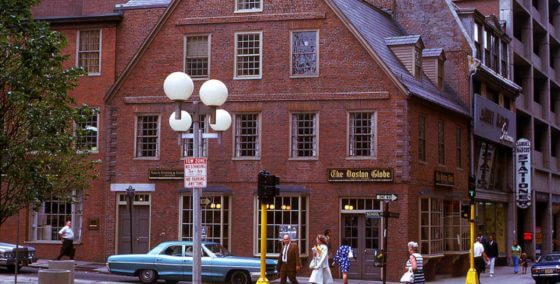
The Old Corner Bookstore, located on the corner of School and Washington Streets, was built in 1718 as an apothecary shop and residence. During the 19th century, it housed the Ticknor and Fields Publishing House and later became the literary center of Boston. Authors such as Henry Wadsworth Longfellow, Ralph Waldo Emerson, Nathaniel Hawthorne, and Henry David Thoreau brought manuscripts here to be published. It is now known as the Globe Corner Bookstore and specializes in New England travel books and maps. Before the Old Corner Bookstore was built, the original building was the home of Mrs. Anne Hutchinson, who was condemned for her dissent from Puritan orthodoxy.
Boston Latin School
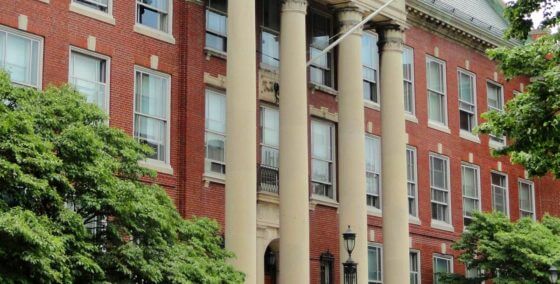
Established in 1635, the Boston Latin School was the first public school in America. By inviting boys of any social class to enter, the school set a precedent for tax-supported public education. The Boston Latin School’s curriculum is inspired by the 18th century latin-school movement, which centered on the idea that study of the classics was the basis of an educated mind. Some of the school’s most famous students were Ben Franklin, Samuel Adams, Henry Ward Beecher, Ralph Waldo Emerson, John Hancock, and Leonard Bernstein. A statue of Benjamin Franklin keeps a watchful eye on the site and a mosaic on the sidewalk behind King’s Chapel marks the spot as well.
Kings Chapel & Burying Ground
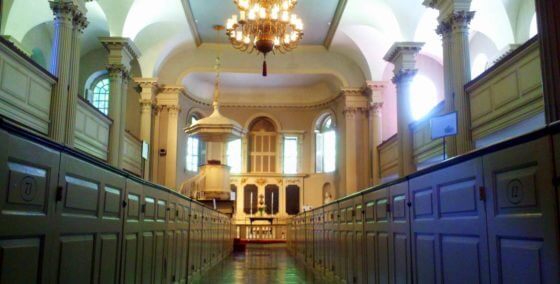
Kings Chapel is a Christian Unitarian church located on Tremont and School Streets. The church was organized in 1686 as an Anglican Church. In 1785 it became the oldest member of the Unitarian Universalist Association and the first Anglican Church. Beside the church is the Kings Chapel Burying Ground, which was Boston’s only burial ground for 30 years. Many historical figures are buried here, including John Winthrop, the colony governor, William Dawes, who rode with Paul Revere on the Midnight Ride, Mary Chilton, the first woman off the Mayflower, and William Emerson, Ralph Waldo Emerson’s father. The original building was a wooden church built in 1688 and it was replaced by the current stone building in 1754. The bell was hung in 1772 and was recast by Paul Revere in 1814; it still rings at services today.
Harrison Gray Otis House

Built in 1796 by Charles Bulfinch for Harrison Gray Otis and his wife Sally, the house is the last surviving home in what was once Boston’s most exclusive neighborhood. As a developer of Beacon Hill, Otis made a fortune, and he later served as a Representative in Congress and Mayor of Boston. The Federal Style is emulated in the home’s classic architecture and elegant furnishings.
141 Cambridge Street, Boston
Cheers Bar
Green Loop – City Tour (Transfer point to Orange Loop - Back Bay Loop)
Attractions to explore near this stop
Share with your friends!
Attractions to explore near this stop
Ultimate Guide to Boston Common
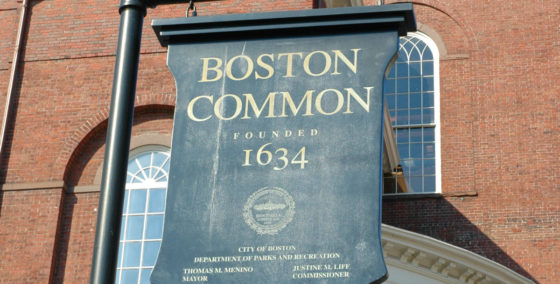
Established in 1634, the 50-acre Boston Common is the oldest public recreation area in the country. Colloquially known as “the Common,” the park is one of the gems in the Emerald Necklace, a series of parks, urban open spaces and greenways that meander through several Boston neighborhoods and stretch to Roxbury. Boston Common, situated across from the Massachusetts State House, forms the southern base of Beacon Hill and is delineated by Beacon, Park, Tremont, Boylston and Charles streets.
-
Admissions
-
Shopping
-
Dining
-
Entertainment
-
Restrooms
Gibson House Museum
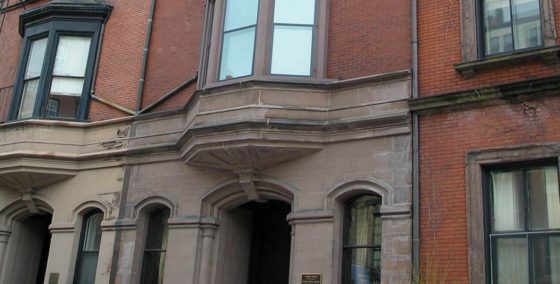
The Gibson House offers visitors a glimpse into 19th century living in Boston’s Back Bay. As one of the Back Bay’s first residences, the Gibson House was built in the mid-19th century and remains the unspoiled residence of a well-to-do Victorian Boston family. Kitchen, scullery, butler’s pantry, and baths, as well as formal rooms and personal quarters are filled with the Gibsons’ original furniture and personal possessions. Located on 137 Beacon Street, between Arlington and Berkeley Streets, Boston.
-
Admissions
-
Shopping
-
Restrooms
Beacon Hill / Antique Row

One of Boston’s oldest neighborhoods, Beacon Hill is known for its charming, narrow cobblestone streets, federal style row houses and gaslit street lamps. It’s also considered to be one of Boston’s most desirable and expensive residential areas in the city. A visit to Boston isn’t complete without a stop here. Whether to shop, dine or wander about admiring the architecture and numerous historic sites, there are so many things to do in Beacon Hill.
Boston Public Garden History and Information Guide
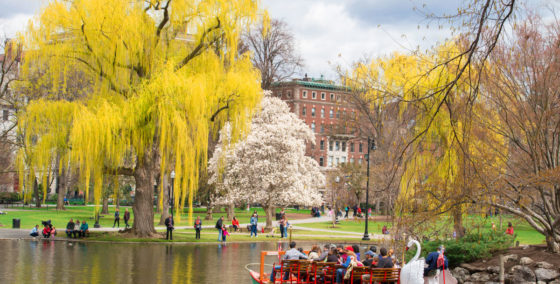
The landscaped, 24-acre Boston Public Garden, established in 1837, was the first public botanical garden in the U.S. The Public Garden contains lovely manicured paths, the famous “Make Way for Ducklings” statues, a 4-acre pond with swans and a variety of other birds, and several memorable statues throughout. You can enjoy a leisurely ride aboard the Swan Boats, pedal-powered gondolas which have been in operation during the summer months since 1877.
-
Dining
-
Restrooms
Make Way For Ducklings
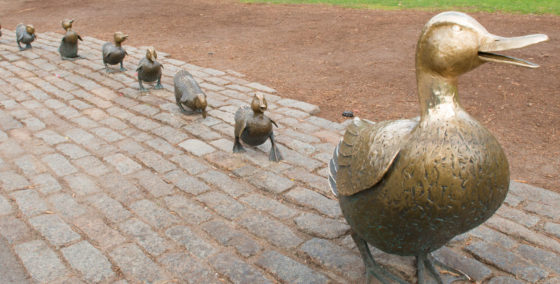
In the Public Garden, you’ll find Mrs. Mallard and her eight duckling statues, based on the popular children’s book Make Way for Ducklings by Robert McCloskey.
Charles Street Meeting House
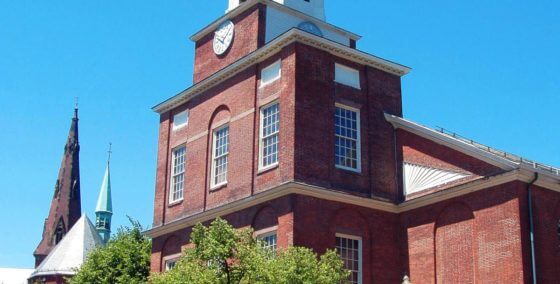
The Charles Street Meeting House in Beacon Hill is a historic church that was built in 1807. Its first congregation was the Third Baptist Church, which baptized its members in the Charles River. Before the Civil War, the church was an important site for the anti-slavery movement, used for speeches by Frederick Douglass, William Lloyd Garrison, Harriet Tubman, and Sojourner Truth. The building is currently used for commercial purposes.
Louisburg Square

Louisburg Square was designed as a model for town house development in the 1840’s but the square was not replicated because of space restrictions. Today, the area is one of the most prestigious addresses in Boston. The homeowners, not the city, own the square and the oval park. Statues of Columbus and Aristides can be seen on the north and south ends, donated by a Greek merchant in 1850. Residents in the square have included author and critic William Dean Howells, the Alcotts, including author Louisa May Alcott, and currently Secretary of State, John Kerry.
Charles River Esplanade/Hatch Shell

Charles River Esplanade is one of the many examples of land set aside in Boston for public enjoyment. During the summer you can catch a free concert or play at the Hatch Shell, or watch the rowers practice in the Charles River as you stroll in the park.
-
Entertainment
Nichols House Museum

Built in 1805 and renovated in 1830, the Nichols House Museum was constructed by architect Charles Bulfinch. The museum takes its name from Rose Standish Nichols, who lived in the house between 1885 and 1960, and represents the lifestyle of the American upper class during that period. The Nichols House Museum offers a room-by-room tour of the four-story row house, which is decorated in original furnishings.
Acorn Street
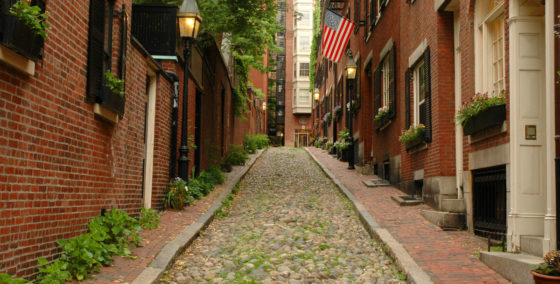
Get MORE out of your summer in Boston aboard the iconic Old Town Trolley and see the best first!
Step back in time on Acorn Street, one of Boston’s most photographed and charming streets. This picturesque lane, nestled in the heart of Beacon Hill, offers a glimpse into the city’s rich history. Once home to 19th-century artisans and tradespeople, the street’s well-preserved row houses now stand as symbols of elegance and prestige. As you stroll along the cobblestone path, admire the timeless beauty of brick facades adorned with colorful doors and vibrant floral window boxes. The quiet ambiance and historical architecture create a serene escape from the bustling city. Whether you’re a history buff or simply seeking a picturesque moment, Acorn Street is a must-visit destination in Boston.
Boston Athenaeum

One of the oldest libraries in the United States, the Athenaeum was founded in 1807 and is an exclusive club of sorts in which a membership is required to use the many magnificent resources of this institution. But feel free to visit the first floor of this historic building that is open to the public and is home to an art gallery with a variety of rotating exhibits. Marble busts, porcelain vases, oil paintings, books and more are a delight to browse through and view. There’s also a children’s room with cozy reading nooks that overlook the Granary Burying Ground.
Museum of African American History
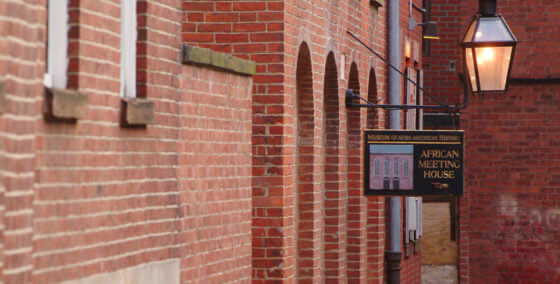
The Museum of African American History is New England’s largest museum dedicated to telling the story of organized black communities from the Colonial period through the 19th century. A variety of exhibits, programs, events and educational activities are presented that showcase the stories of black families – from how they lived, educated their children, worshiped, worked, created artwork and how they organized politically to advance the cause of freedom. Located within the African Meeting House, which is the oldest African Meeting House in America and inside the Abiel Smith School, which was the first building in the country constructed for the sole purpose of housing a black public school, the buildings themselves are a big part of the rich heritage and incredible past of the African Americans in New England.
-
Restrooms
Massachusetts State House
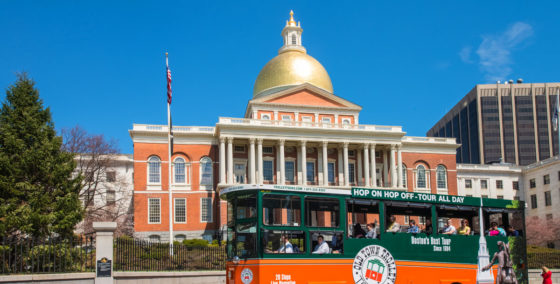
In the distinctive gold-domed building atop Beacon Hill, the past meets the present. On weekdays, you can discover Massachusetts’ history on a free tour of the center of the state government. The building, completed in 1798, was designed by Charles Bulfinch to replace the Old State House.
In addition to housing the state government, the State House also displays various portraits of governors, murals depicting the state’s heritage, and statues inside and on its grounds. The building is recognizable because of its dome sheathed in copper and covered by 23 karat gold, as seen in the film The Departed.
-
Restrooms
 Cheers Bar
Cheers Bar
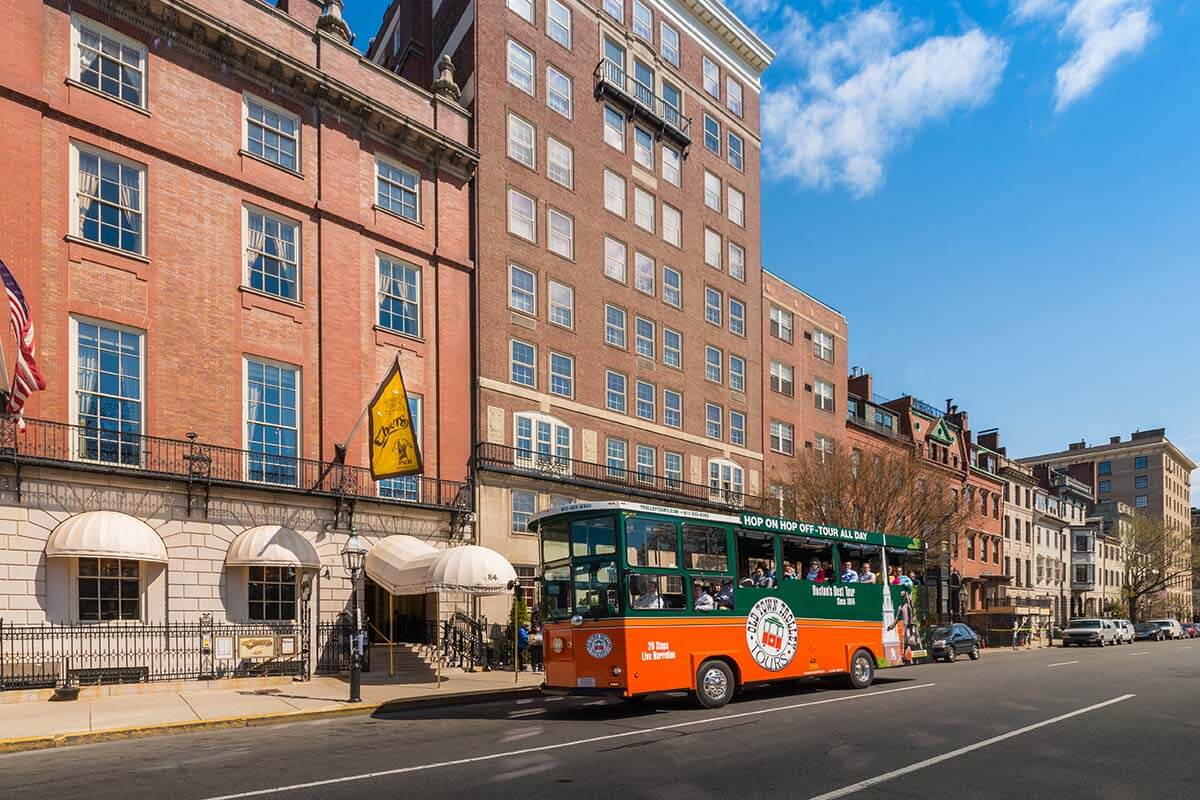
The historic landmark pub was transformed from a long-standing neighborhood gathering spot for locals into one of Boston’s must-see stops for visitors after gaining notoriety as the location of the popular 1980’s TV sitcom, Cheers. The Cheers Pub was founded in 1969 and was discovered in 1981 by Hollywood couple Mary Ann and Glenn Charles. During their visit, they photographed the interior and exterior of the pub, which they gave to the set designer back in Hollywood to replicate for the set of the show. Cheers premiered on NBC in 1982 and remained on the air for 11 seasons, receiving over 100 Emmy nominations over the years. The pub eventually changed its name to Cheers to avoid confusion.
-
 Dining
Dining
Old Town Trolley Welcome Center / Theater District
Green Loop – City Tour (Transfer point to Orange Loop - Back Bay Loop)
Attractions to explore near this stop
Share with your friends!
Attractions to explore near this stop
Boston Public Garden History and Information Guide

The landscaped, 24-acre Boston Public Garden, established in 1837, was the first public botanical garden in the U.S. The Public Garden contains lovely manicured paths, the famous “Make Way for Ducklings” statues, a 4-acre pond with swans and a variety of other birds, and several memorable statues throughout. You can enjoy a leisurely ride aboard the Swan Boats, pedal-powered gondolas which have been in operation during the summer months since 1877.
-
Dining
-
Restrooms
Boch Center - Wang Theatre

Visit the historic Boch Center – Wang Theatre and take a behind-the-scenes tour of one of Boston’s most prominent landmarks. Plus get an exclusive look at The Music Hall, part of the upcoming Folk Americana Roots Hall of Fame!
-
Admissions
-
Entertainment
-
Restrooms
Cheers Bar

The historic landmark pub was transformed from a long-standing neighborhood gathering spot for locals into one of Boston’s must-see stops for visitors after gaining notoriety as the location of the popular 1980’s TV sitcom, Cheers. The Cheers Pub was founded in 1969 and was discovered in 1981 by Hollywood couple Mary Ann and Glenn Charles. During their visit, they photographed the interior and exterior of the pub, which they gave to the set designer back in Hollywood to replicate for the set of the show. Cheers premiered on NBC in 1982 and remained on the air for 11 seasons, receiving over 100 Emmy nominations over the years. The pub eventually changed its name to Cheers to avoid confusion.
-
Dining
Titanic: The Artifact Exhibition

Step into the story of Titanic at this immersive exhibit in Boston, where detailed recreations and authentic artifacts bring the historic ship to life. Spanning 15,000 square feet, the exhibit guides you through carefully crafted spaces, from the elegant Grand Staircase to intimate passenger cabins. Visitors enter in timed groups, each receiving a replica boarding pass to take on the identity of an actual Titanic passenger. This journey traces the ship’s history from its celebrated launch to its tragic end, offering a glimpse into life aboard Titanic.
-
Admissions
-
Shopping
-
Restrooms
Chinatown
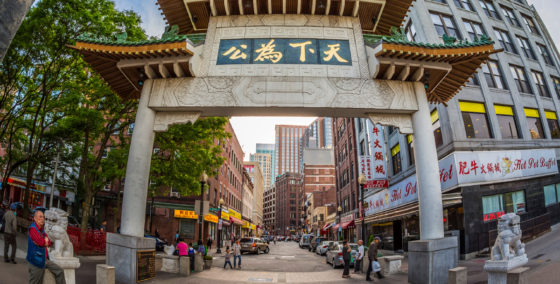
Chinatown in Boston is the only historic Chinatown in New England. The area first became populated by Chinese immigrants in the early 1890’s. Before that, the area was settled by White Anglo-Saxon Protestants. Irish, Jewish, Italian, and Syrian immigrants also all lived in the area at one time or another because of the low cost of housing and job opportunities in the area. In the late 19th century, manufacturing plants moved into the area and remained active through the 1990’s.
-
Shopping
-
Dining
-
Restrooms
Boston Theater District
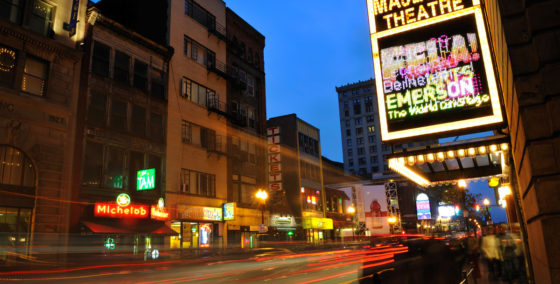
More than a dozen theaters are clustered in the Boston Theater District. On Warrenton Street or Shear Madness Alley, the Charles Playhouse is home to the Blue Man Group, as well as Shear Madness, the country’s longest running non-musical play. Other theaters include the Colonial, Shubert, Orpheum, Opera, Emerson Majestic & Wilbur, most of which were built in the grand architectural style of early 1900s performance halls. These beautifully restored Boston gems, some intimate, some grand, host critically acclaimed productions.
-
Dining
-
Entertainment
-
Restrooms
New State House / Boston Common
Green Loop – City Tour
Attractions to explore near this stop
Share with your friends!
Attractions to explore near this stop
Freedom Trail

For the average Bostonian, life in the New England colonies during the 17th century was, as you might’ve guessed, not exactly one of ease and leisure. Before they were built by stone or brick masonry, homes were small, dank, drafty and made entirely of wood. This building practice was abolished toward the advent of the 1700s due to the susceptibility of fire. Most of the population subsisted as farmers, the drinking water was unsafe, medicine was still in the Dark Ages, and the average lifespan was just shy of 40 years. These were arduous and challenging times and living under the yoke of an oppressive foreign monarchy would eventually prove too much to bear and, thus, a revolution was born.
Comprised of 16 places of interest, each one a milestone in the evolution of Boston from English colony to independence, the Freedom Trail is an essential component of any trip to Boston. This historic attraction literally lays out Boston’s colonial history before you on the very streets where the city’s most transformative events unfolded several hundred years ago.
The thinking behind the design of the Freedom Trail is attributed to William Schofield, a former travel writer for the Boston Herald. He noticed that visitors eager to immerse themselves in the city’s historic past were having trouble finding the landmarks they were looking for. Schofield proposed a solution – Link the most important sites in a numbered sequence along a clearly marked, easy to follow trail that could be walked from end to end without the chance of getting rerouted or lost. There was also the idea that the Freedom Trail would’ve been a typical path to walk for the average colonist back in the day, further enhancing the sensation of traveling back in time.
-
Entertainment
-
Restrooms
Park Street Church
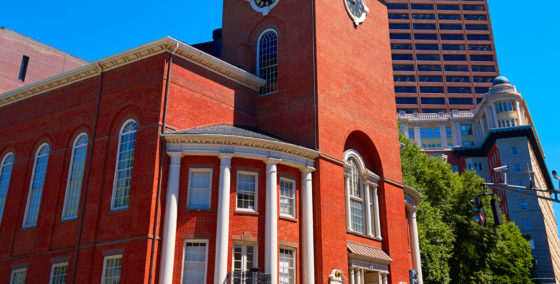
The Park Street Church was founded in 1809 by 26 locals who were mainly former members of the Old South Meeting House. The church became known as Brimstone Corner, possibly because the area was used for the storage of gunpowder during the War of 1812. In 1816, the Park Street Church joined the Old South Church and formed the City Mission Society, which served Boston’s poor. The church was the site of many firsts, including the nation’s first Sunday School in 1818, first prison aid in 1824, and William Lloyd Garrison’s first public statement against slavery in 1829. Park Street Church can be seen from the various surrounding neighborhoods because of its steeple, rising 217 ft. high. Open to visitors summer time only.
Granary Burying Ground

Founded in 1660, the Granary Burying Ground is the third oldest burying ground in Boston. During the Revolution, the area where the Park Street Church now stands had been used to hold grain, which is the reason for the burying ground’s name. Located on Tremont Street, the following famous individuals are buried in the Granary Burying Grounds: Peter Faneuil, Sam Adams, Crispus Attacks, John Hancock, James Otis, Robert Treat Paine, Paul Revere, and members of Ben Franklin’s family.
Black Heritage Trail

The Black Heritage Trail features various homes, memorials, and sites that are significant in the history of Boston’s 19th century African American community. The first slaves arrived in 1638 and by 1705 there were over 400. At this time there were also the beginnings of a free black community in the North End, and by 1790, the time of the first census, Massachusetts reported no slaves. The trail includes the Robert Gould Shaw & the 54th Regiment Memorial, first black regiment, the George Middleton House, the oldest home built by African Americans on Beacon Hill, and the Phillips School, one of Boston’s first schools with an interracial student body.
-
Entertainment
African Meeting House

Dedicated in 1806, the African Meeting House is the Oldest African American Church and was the First African Baptist Church in the United States. Over the years it also served as a school and a community meeting place. It was here that William Lloyd Garrison founded the New England Slavery Society, making it the center of the abolitionist movement. In 1972, the building was acquired by the Museum of Afro-American History and it was restored in 1987. Today, the museum commemorates African American history from slavery to the abolitionist movement, with a focus on educational equality.
Massachusetts State House

In the distinctive gold-domed building atop Beacon Hill, the past meets the present. On weekdays, you can discover Massachusetts’ history on a free tour of the center of the state government. The building, completed in 1798, was designed by Charles Bulfinch to replace the Old State House.
In addition to housing the state government, the State House also displays various portraits of governors, murals depicting the state’s heritage, and statues inside and on its grounds. The building is recognizable because of its dome sheathed in copper and covered by 23 karat gold, as seen in the film The Departed.
-
Restrooms
Ultimate Guide to Boston Common

Established in 1634, the 50-acre Boston Common is the oldest public recreation area in the country. Colloquially known as “the Common,” the park is one of the gems in the Emerald Necklace, a series of parks, urban open spaces and greenways that meander through several Boston neighborhoods and stretch to Roxbury. Boston Common, situated across from the Massachusetts State House, forms the southern base of Beacon Hill and is delineated by Beacon, Park, Tremont, Boylston and Charles streets.
-
Admissions
-
Shopping
-
Dining
-
Entertainment
-
Restrooms
Boston Tea Party Ships & Museum
Green Loop – City Tour (Transfer point to Blue Loop - Seaport Hotel Shuttle)
Attractions to explore near this stop
Share with your friends!
Attractions to explore near this stop
Boston Children's Museum
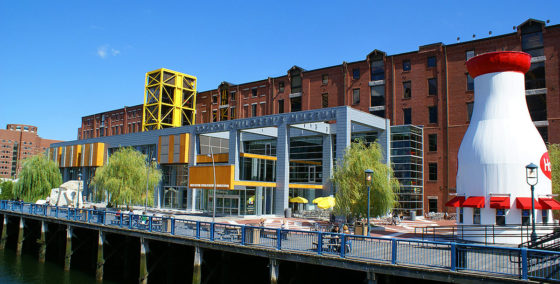
Boston Children’s Museum is the second oldest and one of the most influential children’s museums in the world. For over 100 years it has been engaging children in joyful discovery experiences that instill an appreciation of our world, develop foundational skills, and spark a lifelong love of learning. The Museum’s exhibits and programs emphasize hands-on engagement, learning through experience, and employing play as a tool to spark the inherent creativity, curiosity, and imagination of children. Designed for children and families, Museum exhibits focus on STEAM (Science, Technology, Engineering, Arts, Math), environmental awareness, and health & fitness.
-
Admissions
-
Shopping
-
Dining
-
Restrooms
Institute of Contemporary Art
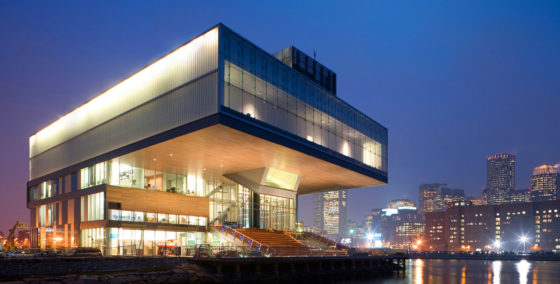
Housed in a dazzling edifice, the Institute of Contemporary Art (ICA) is a treasured centerpiece in Boston’s flourishing Fort Point Channel neighborhood. Featuring a glass-enclosed gallery space cantilevered over the Boston Harbor, the modern façade of the Institute provides an interesting contrast to the historic architectural designs prominent in the city’s skyline. The arrival of the museum in 2006 helped spur the artistic renaissance of this former warehouse district. The ICA sponsors a variety of dynamic permanent and rotating exhibits in its breathtaking waterfront setting.
-
Admissions
-
Shopping
-
Entertainment
-
Restrooms
 Boston Tea Party Ships & Museum
Boston Tea Party Ships & Museum

Located on the Congress Street Bridge, the Boston Tea Party Ships & Museum is an interactive, high tech, floating museum. Unlike anything you’ve ever experienced before, this unique museum sits on a barge in the water, includes tours on restored tea ships and a stunning, interactive documentary that immerses you into the events that led up to the American Revolution. Touch, feel, see and hear what the patriots felt when their passions and angers flared at the injustice of taxation without representation. Participate in multi-sensory exhibits, witness dramatic reenactments by professional actors and historians and discover the true story behind the Boston Tea Party.
-
 Admissions
Admissions -
 Shopping
Shopping -
 Dining
Dining -
 Entertainment
Entertainment -
 Restrooms
Restrooms
Prudential Center/View Boston Observation Deck
Orange Loop – Back Bay Tour
Attractions to explore near this stop
Share with your friends!
Attractions to explore near this stop
Newbury Street

Eight blocks filled with salons, boutiques, and fabulous dining. Boston’s Newbury Street has something for everyone. Shops include The Boston Baked Bean, So Good Jewelry, Niketown, Hempest and more.
-
Shopping
-
Dining
-
Entertainment
Mapparium at Mary Baker Eddy Library

The How Do You See the World? experience explores stories about global progress—how individuals worldwide have overcome challenges and found hope. The space encourages you to reflect on this question while exploring the interactive exhibits.
-
Admissions
-
Restrooms
Historic Ballpark

Get your behind the scenes look at America’s most legendary ballpark, Boston’s Historic Ballpark. Visit the place where Carlton Fisk hit one of baseball’s most famous homeruns, walk the same warning track once strolled by Ted Williams, and even touch the beloved “Green Monster.” Tours leave hourly from the Souvenir Store on Yawkey Way seven days a week.
-
Admissions
-
Shopping
-
Dining
-
Entertainment
-
Restrooms
Christian Science Plaza / Symphony Hall
Orange Loop – Back Bay Tour
Attractions to explore near this stop
Share with your friends!
Attractions to explore near this stop
Museum of Fine Arts (MFA)

The Museum of Fine Arts in Boston is one of the largest museums in the U.S., housing the second largest permanent museum collection in the Western Hemisphere. The museum is affiliated with the School of the Museum of Fine Arts and the sister museum, the Nagoya/Boston Museum of Fine Arts, in Nagoya, Japan. The Museum of Fine Arts offers a fine permanent collection from the masters of American painting as well as a vast selection of works of art from all important periods; it also hosts special exhibits on loan from around the world.
-
Admissions
-
Dining
-
Restrooms
Isabella Stewart Gardner Museum

Isabella Stewart Gardner, a patron of the arts, established the museum in 1903 when her own property on Beacon Hill became too small for her growing collection. The Isabella Stewart Gardner Museum was designed as a replica of the 15th century Venetian style palazzo. Because Gardner disliked the cold, impersonal experience that museums usually offer, she chose the palazzo-style, a design which provides natural light and garden views. The museum, a must-see Boston attraction, features three floors of galleries surrounding a garden courtyard. The collection includes paintings, sculpture, tapestries, furniture, and decorative arts spanning 300 years, from locations around the world.
-
Admissions
-
Dining
-
Restrooms
View Boston

View Boston is the city’s preeminent observatory experience offering unrivaled 360-degree views of Boston’s breathtaking city skyline. Encompassing the top three floors of Boston’s iconic Prudential Tower, the 59,000-square-foot destination features indoor and outdoor panoramic views of the city, an open-air roof deck, two dining destinations, state-of-the-art immersive experiential exhibits, and more. Whether discovering famed landmarks and coveted hidden gems or meeting friends for a sunset cocktail, your unforgettable Bostonian experience begins here.
-
Admissions
-
Shopping
-
Dining
-
Entertainment
-
Restrooms
Symphony Hall

The Symphony Hall in Boston, Massachusetts is considered one of the top concert halls in the world because of its impressive acoustics. The Boston Symphony Orchestra and the Boston Pops share the hall. The Symphony Hall was designed through a collaboration of architects McKim, Mead and White and assistant professor of physics at Harvard University, Wallace Clement Sabine. Sixteen Greek and Roman statue replicas line the walls of the hall and Beethoven’s name is inscribed over the stage. The Symphony Hall’s organ, a 4,800 pipe Aeolian-Skinner, is also considered to be one of the best in the world. It was installed in 1949 and is autographed by Albert Schweitzer.
-
Restrooms
Christian Science Plaza
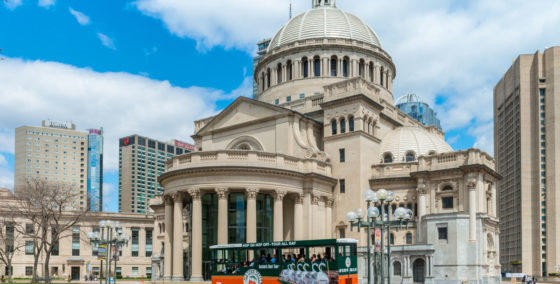
The Christian Science Plaza is the location of the First Church of Christ, Scientist, one of the largest churches in New England. The plaza consists of 14 spacious and serene acres, paved in brick and granite, with orderly rows of trees, buildings, stone benches, a large reflecting pool and a circular fountain. The Mother Church, built in 1894, consists of a Romanesque Church Edifice with a bell tower and stained glass windows, and the larger Church Extension, added in 1906, is a mix of Renaissance and Byzantine architecture.
-
Restrooms
Copley Place Mall
Orange Loop – Back Bay Tour
Attractions to explore near this stop
Share with your friends!
Attractions to explore near this stop
Copley Place
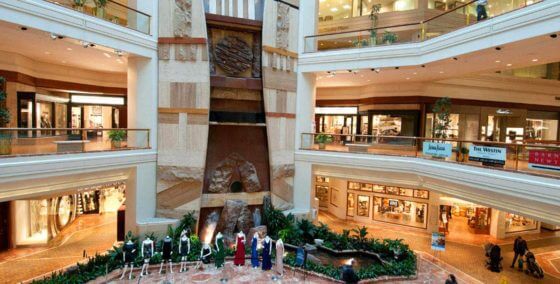
Copley Square, named after the American portraitist John Singleton Copley, is a historic focal point of this busy commercial area. A bronze statue of Copley can be found on the northern side of the square. Nearby Boylston Street offers shopping and attractions plus Newbury Street features upscale boutiques and restaurants in its quaint 19th century townhouses.
-
Dining
-
Restrooms
Newbury Street

Eight blocks filled with salons, boutiques, and fabulous dining. Boston’s Newbury Street has something for everyone. Shops include The Boston Baked Bean, So Good Jewelry, Niketown, Hempest and more.
-
Shopping
-
Dining
-
Entertainment
Prudential Center Skywalk

The Boston Skywalk Observatory is located on the 50th floor of the Prudential Center. From this vantage point you have sweeping 360-degree views of the city and beyond. On a clear day, you can see the mountains of New Hampshire. The Skywalk offers a state-of-the-art Antennae Audio Tour pointing out historic and cultural attractions, and special interactive, audiovisual exhibits on Boston history and architecture.
-
Admissions
-
Restrooms
Copley Square / Back Bay
Orange Loop – Back Bay Tour
Attractions to explore near this stop
Share with your friends!
Attractions to explore near this stop
Trinity Church

Boston’s Trinity Church was founded in 1733 and was originally located in downtown Boston. After the Great Boston Fire of 1872, the church complex moved to its current location and construction was completed in 1877. The impressive church was designed by Henry Hobson Richardson and is the first instance of the Richardsonian Romanesque style. Trinity Church is a Boston landmark and a cultural center for the city.
Boston Public Library
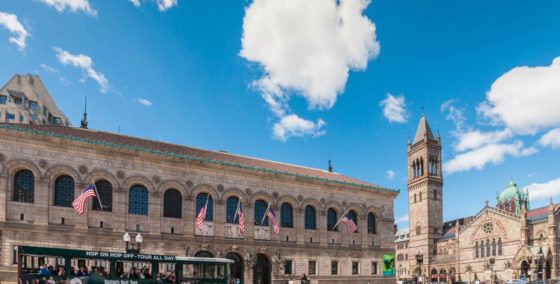
As the oldest large free-lending library in America, the Boston Public Library was designed as a “palace for the people.” The McKim building includes a children’s room, the first in the country, and a sculpture garden with an arcaded gallery surrounding it. When facing the Copley Square side, the library façade resembles a 16th century Italian palace. Bates Hall is the library’s magnificent reading room, named after the library’s original benefactor Joshua Bates.
Newbury Street

Eight blocks filled with salons, boutiques, and fabulous dining. Boston’s Newbury Street has something for everyone. Shops include The Boston Baked Bean, So Good Jewelry, Niketown, Hempest and more.
-
Shopping
-
Dining
-
Entertainment
 Copley Square / Back Bay
Copley Square / Back Bay

Named to honor the famed Boston artist John Singleton Copley, this Back Bay neighborhood is well known for its history and iconic architectural structures. Here, you can spend the day enjoying its charms in the way of various cafes, historical points of interest and upscale shops. There is also much to do, see and explore just footsteps away.
-
 Shopping
Shopping -
 Dining
Dining
Boston Convention Center
Blue Loop – Seaport Hotel Shuttle
Attractions to explore near this stop
Share with your friends!
Attractions to explore near this stop
Black Falcon Cruise Ship Terminal
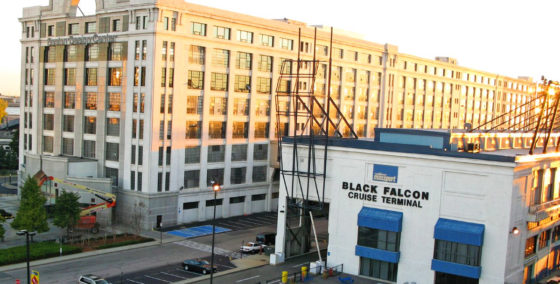
At the Black Falcon Cruise Ship Terminal, over 100 ocean-going vessels set sail for destinations worldwide. Whether you’re beginning a cruise or exploring Boston’s Seaport District, the terminal serves as a gateway to adventure. With its rich history, modern amenities, and proximity to some of Boston’s finest attractions and dining spots, it’s an excellent starting point for your Beantown experience.
-
Admissions
-
Shopping
-
Dining
-
Entertainment
-
Restrooms
Boston Seaport District
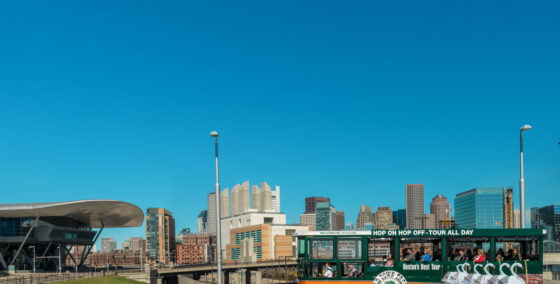
Located on Boston’s waterfront, just across from downtown and not far from the airport, the Seaport District is one of the city’s most burgeoning neighborhoods. If you were looking at a map, you’d find this area stretches from the harbor to Fort Point Channel and into South Boston to East and West First Streets. It includes the four neighborhoods of Fort Point, Fan Pier, the Convention Center, and the Marine Industrial Park.
-
Admissions
-
Shopping
-
Dining
-
Entertainment
-
Restrooms
 Boston Convention Center
Boston Convention Center
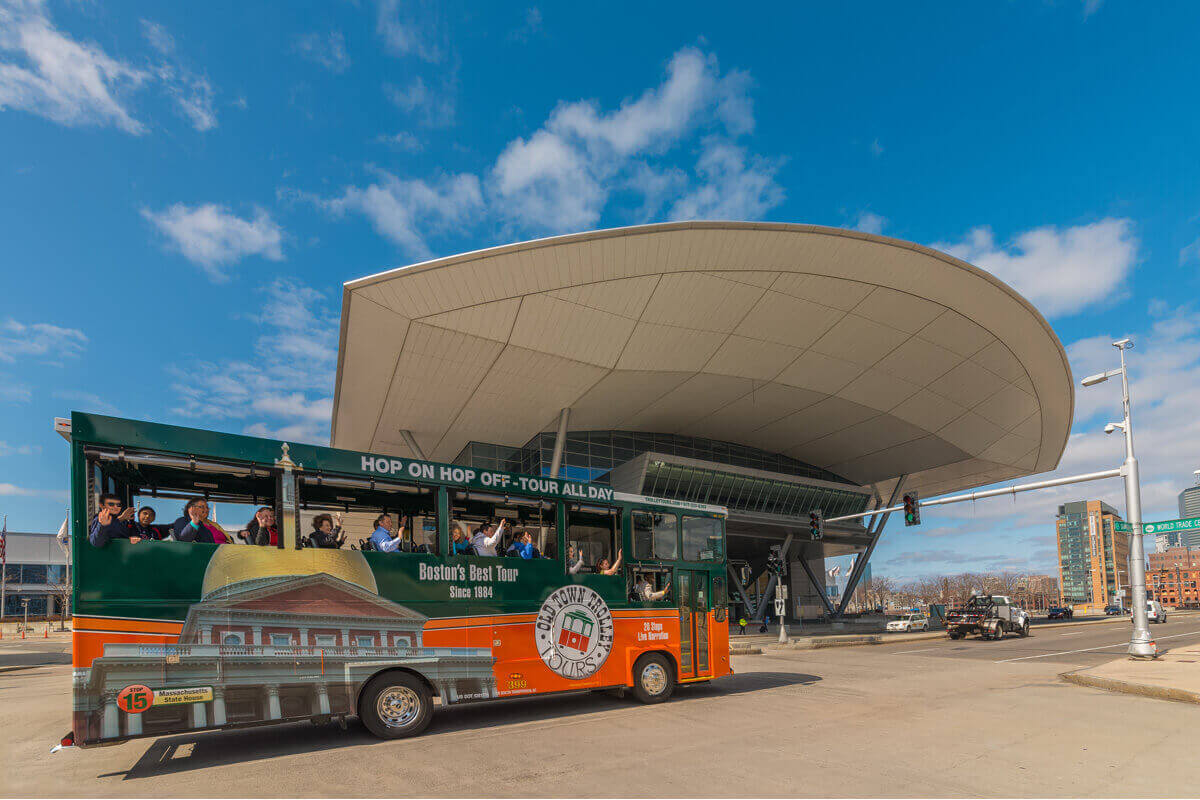
In June of 2004, the Boston Convention Center opened near the South Boston Harbor and Boston’s World Trade Center. Boston’s Convention Center is the largest in New England, offering 516,000 square feet of exhibit space, 300,000 square feet of function space, and a 40,020 square foot ballroom overlooking the city skyline and Boston Harbor. The space had originally been planned to house a stadium for the New England Patriots but concern over traffic prevented its construction.
Massport/Black Falcon Cruise Ship Terminal
Blue Loop – Seaport Hotel Shuttle
Attractions to explore near this stop
Share with your friends!
Attractions to explore near this stop
Black Falcon Cruise Ship Terminal

At the Black Falcon Cruise Ship Terminal, over 100 ocean-going vessels set sail for destinations worldwide. Whether you’re beginning a cruise or exploring Boston’s Seaport District, the terminal serves as a gateway to adventure. With its rich history, modern amenities, and proximity to some of Boston’s finest attractions and dining spots, it’s an excellent starting point for your Beantown experience.
-
Admissions
-
Shopping
-
Dining
-
Entertainment
-
Restrooms
Boston Seaport District

Located on Boston’s waterfront, just across from downtown and not far from the airport, the Seaport District is one of the city’s most burgeoning neighborhoods. If you were looking at a map, you’d find this area stretches from the harbor to Fort Point Channel and into South Boston to East and West First Streets. It includes the four neighborhoods of Fort Point, Fan Pier, the Convention Center, and the Marine Industrial Park.
-
Admissions
-
Shopping
-
Dining
-
Entertainment
-
Restrooms
 Massport/Black Falcon Cruise Ship Terminal
Massport/Black Falcon Cruise Ship Terminal

This stop is conveniently located just outside of the Black Falcon Cruise Ship Terminal. When you exit the terminal turn left on Black Falcon Avenue; at the stop sign continue straight onto Terminal Street. You will see a fenced-in parking lot on your left, at the end of the lot turn left towards the water. At the end of the fence turn right and wait next to the fence; the orange and green Old Town Trolley will stop right by the fence.
To return to any of the piers, adults must have both ship’s card (which usually doubles as your room key) and a valid photo identification (passport, driver’s license, etc.)
It is open during cruise ship “port of call” days only; for more information please call 617-269-7150.
Boston Fish Pier
Blue Loop – Seaport Hotel Shuttle
Attractions to explore near this stop
Share with your friends!
Attractions to explore near this stop
Black Falcon Cruise Ship Terminal

At the Black Falcon Cruise Ship Terminal, over 100 ocean-going vessels set sail for destinations worldwide. Whether you’re beginning a cruise or exploring Boston’s Seaport District, the terminal serves as a gateway to adventure. With its rich history, modern amenities, and proximity to some of Boston’s finest attractions and dining spots, it’s an excellent starting point for your Beantown experience.
-
Admissions
-
Shopping
-
Dining
-
Entertainment
-
Restrooms
Institute of Contemporary Art

Housed in a dazzling edifice, the Institute of Contemporary Art (ICA) is a treasured centerpiece in Boston’s flourishing Fort Point Channel neighborhood. Featuring a glass-enclosed gallery space cantilevered over the Boston Harbor, the modern façade of the Institute provides an interesting contrast to the historic architectural designs prominent in the city’s skyline. The arrival of the museum in 2006 helped spur the artistic renaissance of this former warehouse district. The ICA sponsors a variety of dynamic permanent and rotating exhibits in its breathtaking waterfront setting.
-
Admissions
-
Shopping
-
Entertainment
-
Restrooms
Spirit of Boston Cruises
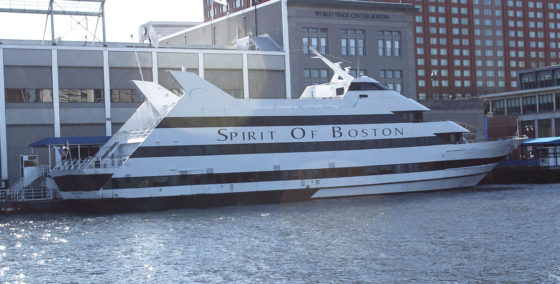
For a truly unique and entertaining view of Boston Harbor, consider taking a cruise aboard the Spirit of Boston. The Spirit of Boston offers a variety of cruise experiences including lunch, dinner, sunset cruises, and midnight moonlight cruises. The cruises pass the World Trade Center, Boston Tea Party site, Boston Massacre site, the Old North Church, the Bunker Hill Monument, Old Ironsides, and more.
Harpoon Brewery
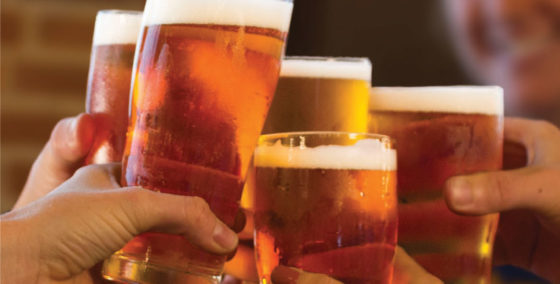
-
Dining
-
Restrooms
Massport/Black Falcon Cruise Ship Terminal
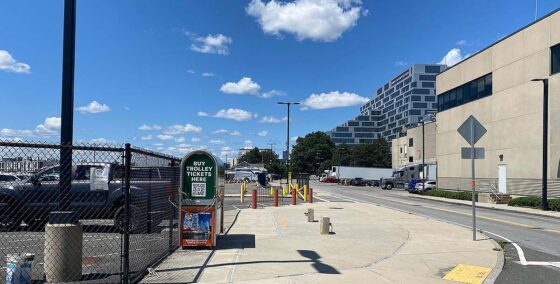
This stop is conveniently located just outside of the Black Falcon Cruise Ship Terminal. When you exit the terminal turn left on Black Falcon Avenue; at the stop sign continue straight onto Terminal Street. You will see a fenced-in parking lot on your left, at the end of the lot turn left towards the water. At the end of the fence turn right and wait next to the fence; the orange and green Old Town Trolley will stop right by the fence.
To return to any of the piers, adults must have both ship’s card (which usually doubles as your room key) and a valid photo identification (passport, driver’s license, etc.)
It is open during cruise ship “port of call” days only; for more information please call 617-269-7150.
Blue Hills Bank Pavilion

One of Boston’s premier concert venues, the Pavilion, is open seasonally from May through October. From Tony Bennett to K.D. Lang to Bonnie Raitt to Jay-Z; they have all played at the Bank of America Pavilion, and this year’s lineup looks just as exciting as past years. With a perfect Boston Harbor location and many outstanding “sea oriented” restaurants located nearby, as well as a cutting edge New York style steakhouse, Del Frisco’s, spending an evening in the Seaport District can be a real Boston experience. When the concert is over, visit Harpoon Brewery and Beer Hall just 100 yards away from the Pavilion.
-
Admissions
-
Entertainment
-
Restrooms
Boston Seaport District

Located on Boston’s waterfront, just across from downtown and not far from the airport, the Seaport District is one of the city’s most burgeoning neighborhoods. If you were looking at a map, you’d find this area stretches from the harbor to Fort Point Channel and into South Boston to East and West First Streets. It includes the four neighborhoods of Fort Point, Fan Pier, the Convention Center, and the Marine Industrial Park.
-
Admissions
-
Shopping
-
Dining
-
Entertainment
-
Restrooms
South Station
Blue Loop – Seaport Hotel Shuttle
Attractions to explore near this stop
Share with your friends!
Attractions to explore near this stop
Boston Children's Museum

Boston Children’s Museum is the second oldest and one of the most influential children’s museums in the world. For over 100 years it has been engaging children in joyful discovery experiences that instill an appreciation of our world, develop foundational skills, and spark a lifelong love of learning. The Museum’s exhibits and programs emphasize hands-on engagement, learning through experience, and employing play as a tool to spark the inherent creativity, curiosity, and imagination of children. Designed for children and families, Museum exhibits focus on STEAM (Science, Technology, Engineering, Arts, Math), environmental awareness, and health & fitness.
-
Admissions
-
Shopping
-
Dining
-
Restrooms
Fort Point Channel

The Channel extends from Gillette Headquarters, home to America’s premier razor manufacturer since King Gillette founded the company over 100 years ago, to the site of the Boston Tea Party on those very waters in 1773 and out into the Boston Harbor. In today’s Boston, the Fort Point Channel is bordered by restaurants, fabulous hotels and water view condos (look at the beautifully mirrored InterContinental Hotel and Residences), as well as attractions like the Children’s Museum and the recently rebuilt Boston Tea Party Ships & Museum.
-
Dining
-
Restrooms
Boston Tea Party Ships & Museum
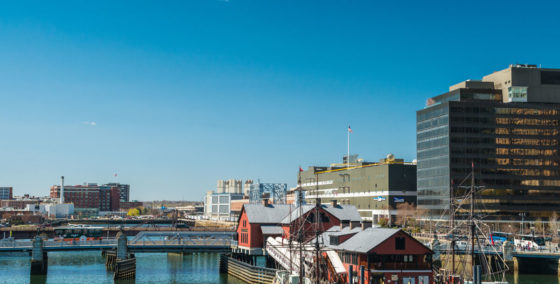
Located on the Congress Street Bridge, the Boston Tea Party Ships & Museum is an interactive, high tech, floating museum. Unlike anything you’ve ever experienced before, this unique museum sits on a barge in the water, includes tours on restored tea ships and a stunning, interactive documentary that immerses you into the events that led up to the American Revolution. Touch, feel, see and hear what the patriots felt when their passions and angers flared at the injustice of taxation without representation. Participate in multi-sensory exhibits, witness dramatic reenactments by professional actors and historians and discover the true story behind the Boston Tea Party.
-
Admissions
-
Shopping
-
Dining
-
Entertainment
-
Restrooms
 South Station
South Station
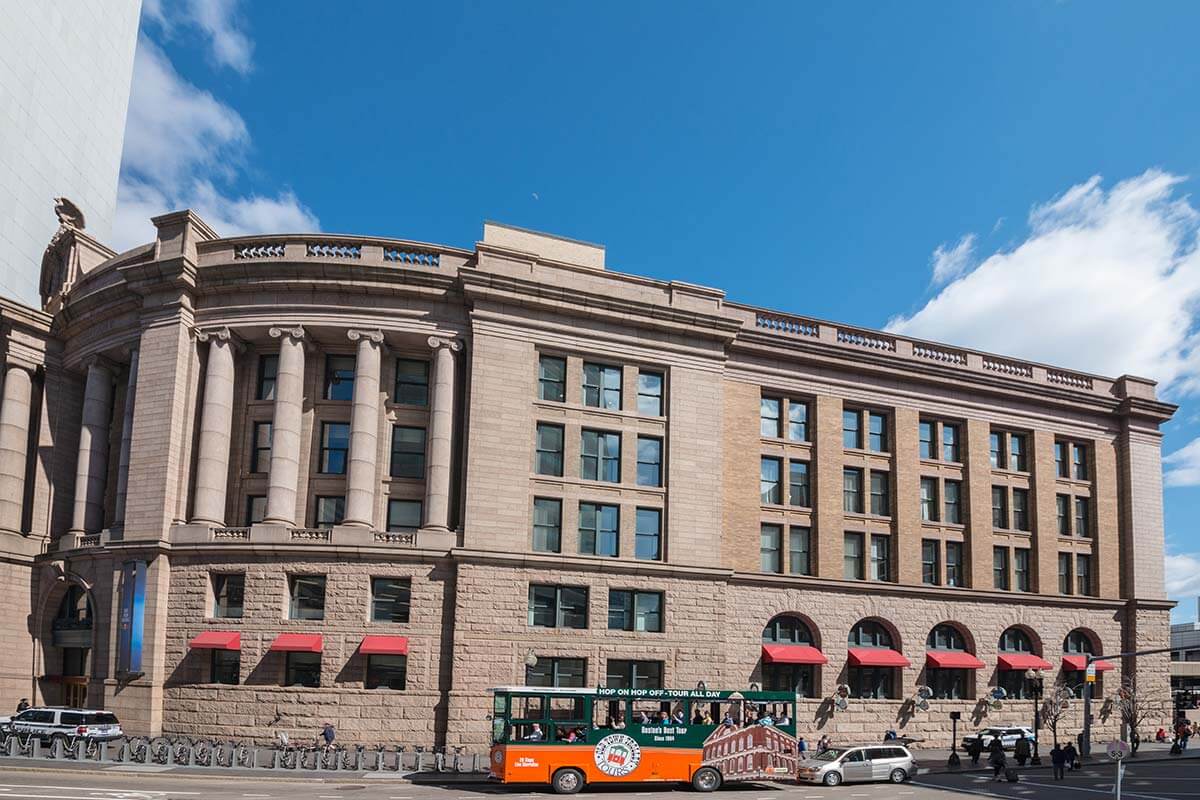
Completed in 1899, this beautiful pink granite building has been the hub of Boston’s rail transportation for more than a century. South Station was built to be a union station for the four railroad terminals serving Boston. The train shed, which was removed in 1930 due to corrosion, was one of the largest in the world. South Station was restored in 1989, leaving 13 tracks and a smaller building, which features Boston restaurants and businesses.
Here you can catch an Amtrak train for points south, a commuter rail to Boston’s suburbs, or take the city’s red and silver lines of the subway system.
-
1Faneuil HallSTOP
-
2Historic North EndSTOP
-
3USS Constitution and MuseumSTOP
-
4North Station / TD GardenSTOP
-
5Downtown Crossing / Historic DistrictSTOP
-
6Cheers BarSTOP
-
7Old Town Trolley Welcome CenterSTOP
-
8Beacon Hill / Boston CommonSTOP
-
9Boston Tea Party Ships & MuseumSTOP
-
10Prudential Center/View Boston Observation DeckSTOP
-
11Christian Science Plaza / Symphony HallSTOP
-
12Copley Place MallSTOP
-
13Copley Square / Trinity ChurchSTOP
-
14Boston Convention CenterSTOP
-
15Massport/Black Falcon Cruise Ship TerminalSTOP
-
16Boston Fish PierSTOP
-
17South StationSTOP

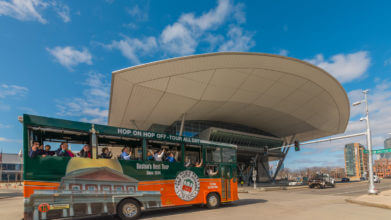

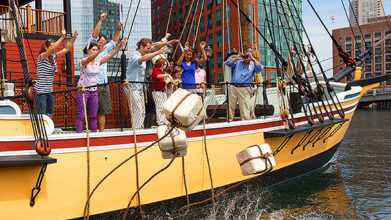







 Admissions
Admissions  Shopping
Shopping  Dining
Dining  Restrooms
Restrooms 
 Entertainment
Entertainment 

